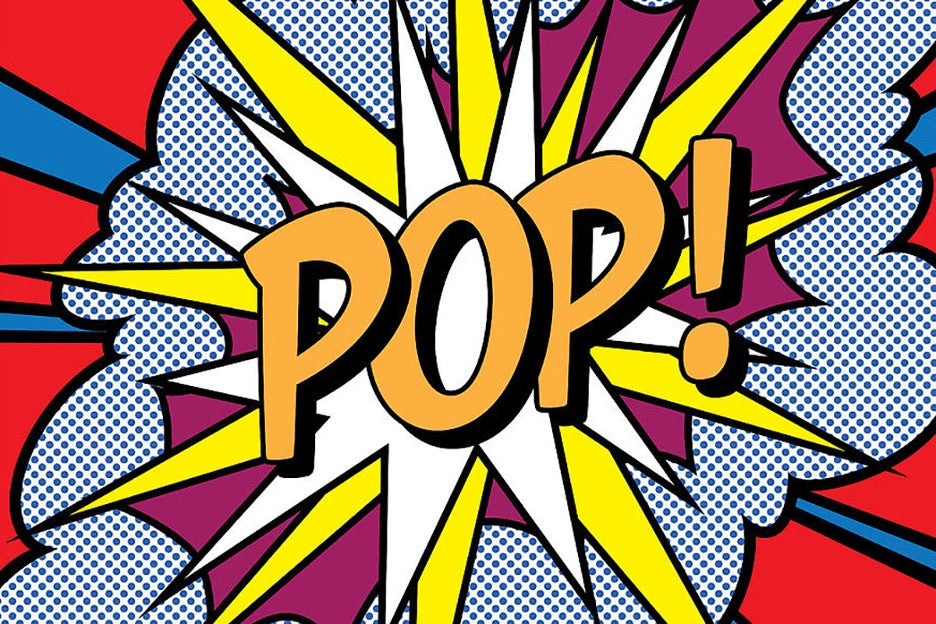
The History of Pop Art
Share
The Vibrant World of Pop Art: A Journey Through Its Origins, Icons, and Influence
Pop art is one of the most iconic art movements of the 20th century, a vibrant collision of culture, color, and commentary that continues to influence the art world today. Known for its bold, graphic style and its embrace of popular culture, pop art transformed the landscape of modern art, making it accessible and relatable to a broader audience. In this blog post, we will explore the origins of pop art, its key figures, and its lasting impact on contemporary art and culture.
The Origins of Pop Art
Pop art emerged in the 1950s as a reaction against the abstract expressionism that dominated the art world at the time. While abstract expressionism was characterized by emotional intensity and a focus on individualism, pop art sought to connect with the public by incorporating imagery from popular culture, including advertising, comic books, and everyday objects.
The movement first took shape in the United Kingdom, where artists like Richard Hamilton and Eduardo Paolozzi began to experiment with combining fine art with elements of mass media. Hamilton's collage "Just What Is It That Makes Today's Homes So Different, So Appealing?" (1956) is often cited as one of the earliest examples of pop art, featuring images cut from magazines and advertisements.
However, it was in the United States where pop art truly flourished. American artists like Andy Warhol, Roy Lichtenstein, and Jasper Johns became the faces of the movement, each bringing their unique perspective and style to the art world. They embraced the consumerism of post-war America, turning everyday items like Campbell's soup cans, Coca-Cola bottles, and comic strips into iconic works of art.
Icons of Pop Art
-
Andy Warhol
Perhaps the most famous pop artist, Andy Warhol's work epitomizes the movement's ethos. Warhol's fascination with celebrity culture and consumer goods led to his creation of some of pop art's most recognizable images, such as the Campbell's Soup Cans (1962) and portraits of Marilyn Monroe. Warhol's use of silkscreen printing allowed him to mass-produce his art, blurring the lines between high art and mass production. -
Roy Lichtenstein
Known for his comic book-inspired works, Roy Lichtenstein's art is instantly recognizable for its bold lines, vibrant colors, and Ben-Day dots technique. Works like "Whaam!" (1963) and "Drowning Girl" (1963) are perfect examples of Lichtenstein's ability to elevate comic strip imagery into fine art, while also commenting on the nature of art itself. -
Claes Oldenburg
Claes Oldenburg brought pop art into the three-dimensional space with his large-scale sculptures of everyday objects. His oversized replicas of items like hamburgers, ice cream cones, and household appliances playfully challenge the viewer's perception of scale and significance, transforming the mundane into something monumental. -
Jasper Johns
While often associated with both pop art and abstract expressionism, Jasper Johns made a significant contribution to the pop art movement with his use of familiar symbols such as flags, targets, and numbers. His work questions the meaning of these symbols and how they function within the cultural context.
The Influence of Pop Art
Pop art's influence extends far beyond the gallery walls. It played a crucial role in breaking down the barriers between "high" and "low" art, challenging the traditional hierarchies of the art world. By incorporating elements of mass media and consumer culture, pop artists made art more accessible and relatable to a broader audience.
The movement's legacy is evident in various aspects of contemporary culture, from graphic design and fashion to advertising and film. Brands often borrow from the pop art aesthetic, using bold colors, repetition, and irony to create visually striking campaigns. The movement also laid the groundwork for later art movements, such as postmodernism and street art, which continue to explore the relationship between art and popular culture.
Pop Art in the Modern World
Today, pop art remains a significant influence on artists around the globe. The movement's themes of consumerism, mass media, and celebrity culture are as relevant now as they were in the 1960s, and contemporary artists often draw upon pop art techniques and motifs in their work. Exhibitions dedicated to pop art and its pioneers are regularly held in major museums and galleries, ensuring that the vibrant spirit of pop art continues to inspire new generations of artists and art lovers.
Pop art is more than just a colourful, nostalgic look at the past; it is a powerful commentary on the world we live in. By celebrating and critiquing the icons of popular culture, pop art invites us to reflect on the nature of art, consumerism, and society. Whether you are a seasoned art aficionado or a casual observer, the bold and engaging world of pop art offers something for everyone. As you explore this movement, you may find that its vibrant energy and cultural relevance resonate just as strongly today as they did over half a century ago.
